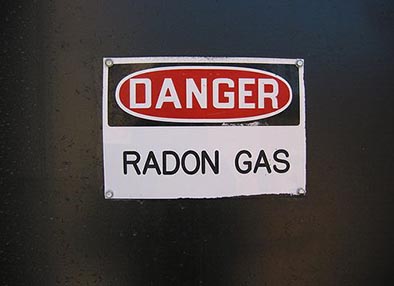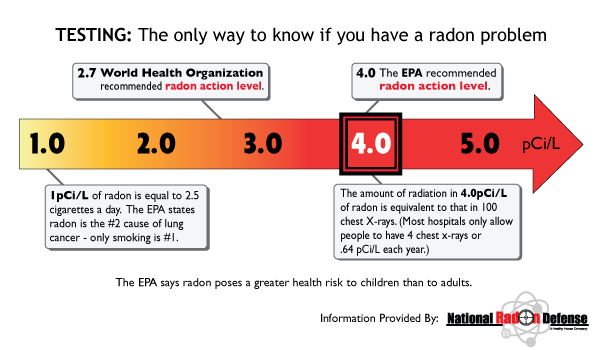What is a safe level of radon?
How do you know your home is a healthy place when radon is odorless, tasteless, and colorless? This is why it is called the “silent killer” and is the number two cause of lung cancer in the United States. How do you know what level is an acceptable level? How do you know if you even have radon in your home at all? This is a task for AmeriServ Radon Mitigation Iowa. We can teach you about the radon levels that could be present in your home. Know that no level of radon is safe, but there is a point where it becomes dangerous. For your radon levels Iowa questions, we have answers for you!
Dangerous Levels of Radon in Iowa
Radon is measured in picocuries per liter (pCi/L). The smaller that number, the better. No matter what amount of radon is in your home, though, it can pose a danger. The bottom line is that any level of this dangerous gas poses a threat to you and your family.
The EPA says that 4.0 pCi/L is the action level for any space, however the World Health Organization actually states it is a lower rate of 3.0 pCi/L. At this level, the home needs to mitigated to lessen the radon levels right away. The EPA says radon is a larger threat to children than adults, but it is dangerous to everyone. It is also more hazardous to smokers who are already at risk of lung cancer.
Radon enters a home through cracks, holes, or other openings (usually in the floor.) The pressure inside of your house is lower than the pressure surrounding it. This causes the “stack effect.” Like a vacuum, the radon infested air is sucked into your home. Radon levels generally rise when it gets chilly out because windows and doors are staying closed, so the radon has no way out.
The average radon level outside is .4 pCi/L. The national average for homes is 1.5 pCi/L. Iowa’s radon levels are even proven to be greater than other states. Chances are, if you live in an Iowa home, you have some sort of radon danger in your home. Let us help keep you and your family safe from that danger.
You might still be questioning how dangerous these various levels of radon are. To put it in perspective, even 1 pCi/L is equal to smoking two and a half cigarettes per day. The  radiation in a 4.0 pCi/L level of radon is equal to the radiation from 100 chest x-rays. Hospitals will only allow you to get 4 chest x-rays in a year because they emit so much radiation. Radon is no doubt, a very dangerous gas.
radiation in a 4.0 pCi/L level of radon is equal to the radiation from 100 chest x-rays. Hospitals will only allow you to get 4 chest x-rays in a year because they emit so much radiation. Radon is no doubt, a very dangerous gas.
How to Control Radon Levels in Iowa
The only way to know that radon is in your home is to do a test for the gas. AmeriServ Radon Mitigation Iowa can perform a quick, inexpensive test in your home to test for levels or radon gas. It is the very best way to know how to proceed. Once your home has been tested, AmeriServ can provide you with radon mitigation Iowa services. We can even install a radon mitigation Iowa system in your home to constantly lower its radon levels.
With 50 years in the construction world, we have the know how and expertise to set your home up right. You can count us to provide you with a quick solution that with keep you safe and provide you with peace of mind. This is not something you want to wait on. Radon levels in Iowa have been proven to be unusually high. Don’t take a chance, call AmeriServ with all your concerns about radon levels in Iowa today. We are here to serve your radon mitigation Iowa needs. Call us today for an appointment. Learn more today by visiting our FAQ page.
 Our Response to COVID-19
Our Response to COVID-19 
